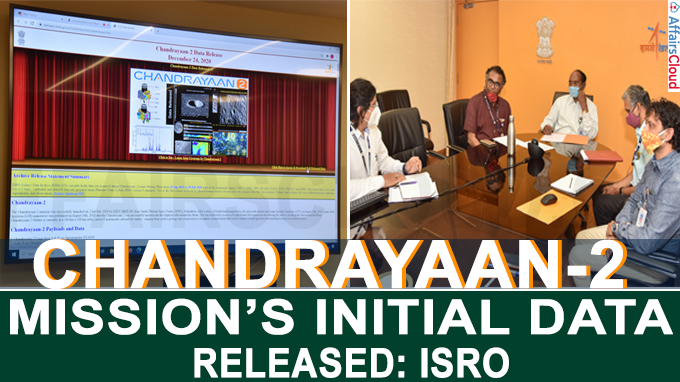
i.At present, ISRO Science Data Archive (ISDA) has datasets acquired by Chandrayaan-2 payloads from 7 instruments. Data sets from Imaging Infra-Red Spectrometer (IIRS) payload will be added in the future.
ii.The Chandrayaan-2 was launched on July 22, 2019 from the Satish Dhawan Space Centre at Sriharikota in Andhra Pradesh.
iii.The data sets have been released to the public in the Planetary Data System-4 (PDS4) format.
iv.ISSDC is the main centre of data archive for the planetary missions of ISRO.
ISRO Developing Green Propulsion for ‘Gaganyaan’:
ISRO is in the process of developing Green Propellants for ‘Gaganyaan’ – India’s human space flight mission. The Green propellants will be used for every stage of a rocket.
i.ISRO has also developed space-grade lithium-ion batteries electric propulsion systems.
ii.The process of preparing Green propellants for future rocket & satellite propulsion systems was started by ISRO in 2018.
iii.It has developed an eco-friendly solid propellant based on Glycidyl Azide Polymer (GAP) as fuel & Ammonium Di-Nitramide (ADN) as oxidizer at laboratory level.
iv.The combination of GAP & ADN is expected to eliminate emission of chlorinated exhaust products from rocket motors.
Other initiatives by ISRO for Green Propellants:
i.ISRO is carrying out demonstrations using Green propellants such as Hydrogen Peroxide (H2O2), Kerosene, Liquid Oxygen (LOX), Liquid Methane, ADN-Methanol-water, and ADN-Glycerol-water.
ii.ISRO has developed ISROSENE (rocket grade version of kerosene) as an alternative to conventional rocket fuel hydrazine.
iii.LOX/LH2 combination is already under use in cryogenic upper stages of GSLV & GSLV Mk-III launch vehicles.
Electric Propulsion System:
ISRO successfully demonstrated an electric propulsion system for station keeping operations in South Asia Satellite which was launched on May 5, 2017.
Recent Related News:
i.On July 3, 2020,ISRO released the picture of the closest and biggest moon of Mars named “Phobos” which was captured by Mars Colour Camera (MCC) onboard India’s Mars Orbiter Mission (MOM).
ii.ISRO announced that Chandrayaan-2 has captured images of Craters of the Moon by Terrain Mapping Camera – 2 (TMC-2) and named one of the craters as ‘Sarabhai Crater’ after Indian astrophysicist Dr. Vikram Ambalal Sarabhai.
About Indian Space Research Organisation (ISRO):
Chairman – K Sivan
Headquarters – Bengaluru, Karnataka
About Indian Space Science Data Centre (ISSDC):
Location – Bengaluru, Karnataka